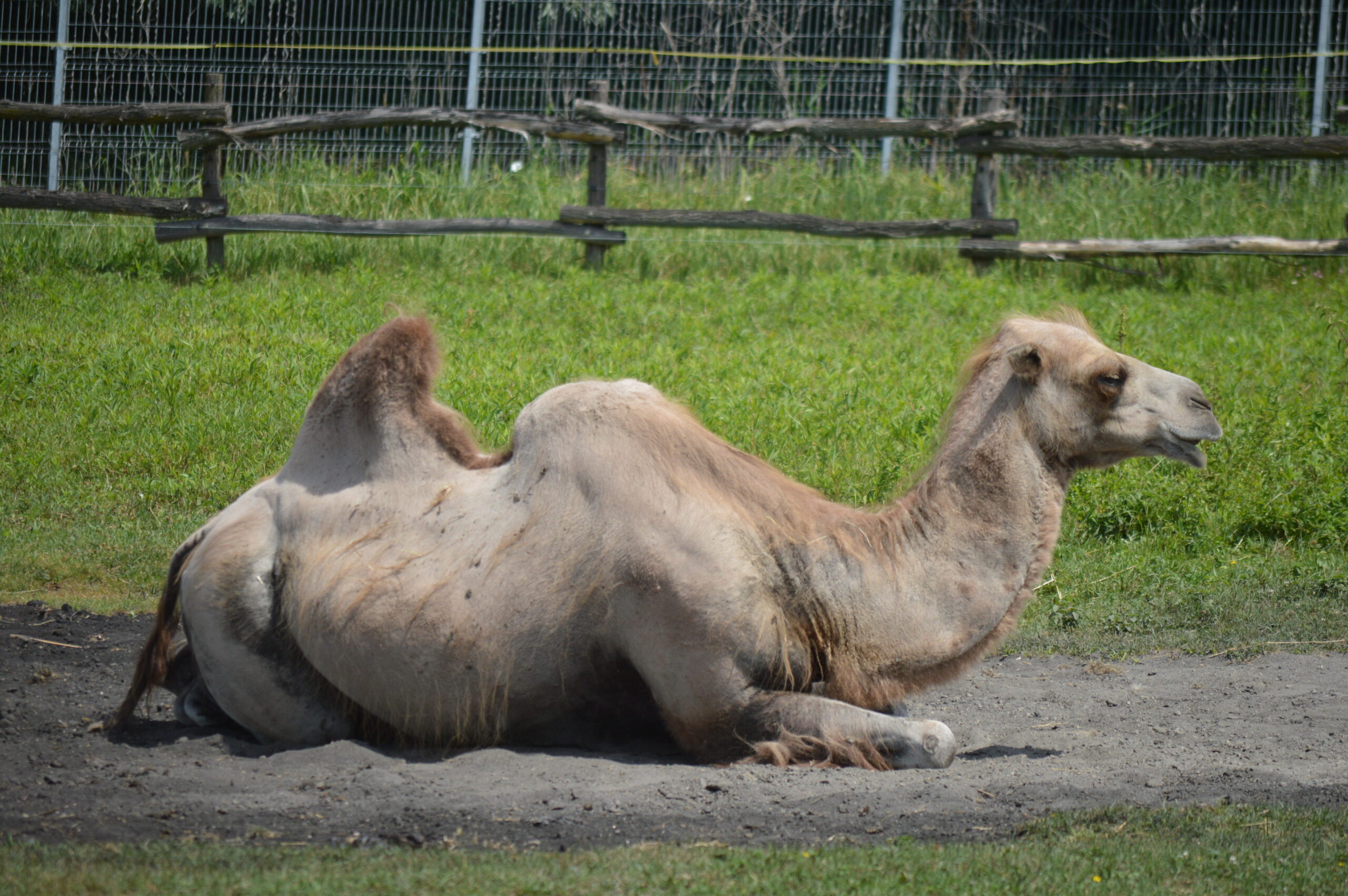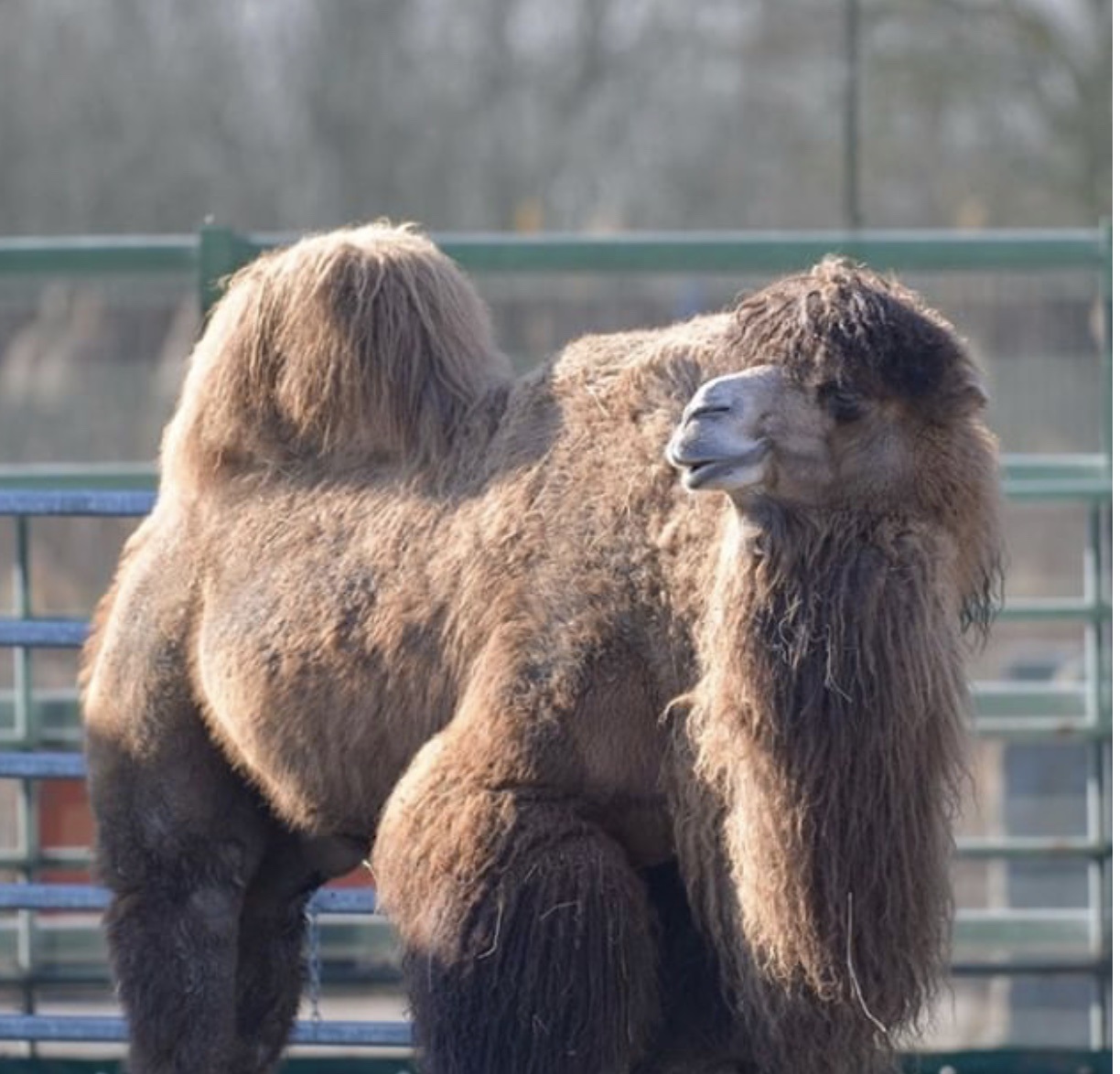Camels are very well adapted to life in the desert. Instead of hooves, they have “slippers”, thanks to which their feet do not get stuck in the sand. They can close their nostrils so they don’t get sand up their noses in a desert storm. The ears are protected from sand thanks to the dense fur. And the eyes are also safe – they can “snap” the eye with the third eyelid.
In the summer, the two-humped camel is protected by short hair, which protects it from sunlight and intrusive insects, and in the winter it turns into a thick winter coat, which provides insulation from cold rain, unpleasant wind and snow.
It moves in herds, which are always led by one older male. There can be 6-20 individuals in a herd. Young males roam alone for a while until they manage to form a harem. They often try to attract at least a few females from the harem to the old male, but he pushes them away.
Mating takes place in a special sitting position. Female camels give birth to young once every two years. They give birth exclusively standing up. Already two hours after birth, the cub tries to stand up and walk. However, it is only after a few days that he is more confident in walking. The female nurses the young almost until its sexual maturity (2nd-3rd year of life). During thirteen months, it can produce 1 to 7 liters of milk per day. Young males are expelled from the group, females stay with their mother.
Currently, the wild two-humped camel (Camelus ferus) is considered a separate species and is on the verge of extinction. The last wild populations survive in the number of several hundred individuals in the Gobi desert in the southwest of Mongolia. There are an estimated 15 million farmed animals.
The origin of the two-humped camel is in Central Asia. It can be seen in the region from Kazakhstan to northern Manchuria. Just like the one-humped camel (dromedary), which originated in Africa, it was domesticated already in the distant past. The wild one-humped camels were exterminated a long time ago.
The camel is extremely undemanding, content with very poor nutritional fodder and extremely efficient in water management.
Humps serve to create fat reserves – a source of metabolic water. The myth that the camel carries water reserves in its humps is therefore false.
Camels can drink a third of their body weight at one time.
Camels do not tolerate humid climates very well. Otherwise, they are able to survive temperature fluctuations from minus 27 degrees Celsius to plus 50 without problems.
They are ruminants and can also digest hard grasses, herbs or thinner twigs with leaves of bushes growing in inhospitable conditions.



